
boot Düsseldorf 2025
Hamburg, 11.01.2025 – After successful participation in several trade fairs and surf festivals in 2024, it is time to present the Stoked
Would you like to try something new and preferably be out and about in the element of water? If you’ve always been fascinated by the world of surfing but are unsure about which surf sport to choose, then this blog is for you! Of course, this blog is also for active surfers who want to try out a different surf sport. We present the most popular surf sports and can guarantee one thing: Whichever surf sport you choose, once you’ve felt that liberating “stoke” feeling on the water, you won’t be able to get back on land any time soon!
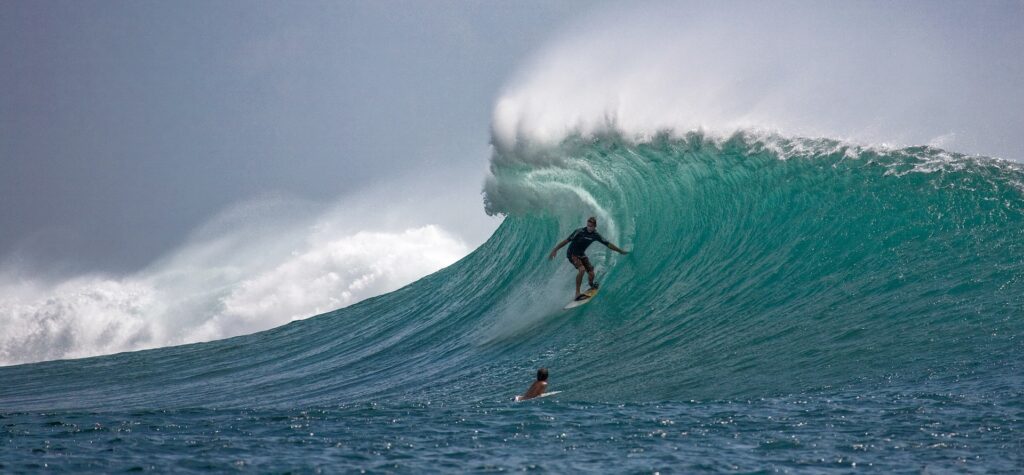
Surfing is probably one of the best-known sports in the world of surfing. The equipment includes the classic surfboard with a leash and either one fin (single), two fins (twin fins), three fins (thrusters) or four fins (quad). The number of fins depends on the type of surfboard and the surfing conditions. A general distinction is made between longboards and shortboards.
Longboards: With a length of 8-11 feet, longboards are based on the original surfboards of the Polynesians. They are characterized by great stability and are combined with an elegant surf style. Whether for beginners or advanced riders, in moderate conditions with slow breaking waves and sandy ground, the longboard is your best friend.
Shortboard: A shortboard, on the other hand, is about 5-7 feet long and has a pointed “nose”, which makes it ideal for agile maneuvers and numerous tricks. Surfing professionals grab a shortboard to surf in more extreme conditions like large hollow-breaking waves (Tubes) over razor-sharp reefs.
Crazy Stuff:
• In search of an adrenaline rush, so-called “guns” or “semi-guns” are used in big wave surfing, tackling waves of at least 20 feet in size.
• Have you ever heard of tow-in surfing? Or big wave surfers like Sebastian Steudner? If not, it’s going to be pretty crazy! In tow-in surfing, the surfer is towed into waves, up to 25 meters high, for example in Nazaré, by a jet ski using a rope. The surfer stands in foot straps on special surfboards and reaches speeds of up to 80 km/h when riding the wave. Sebastian Steundner holds the world record for the highest wave ever surfed with 26.21 meters!
• It also works without a fin: The so-called “Alaia surfboards” made of wood date back to the beginnings of surfing in Hawaii and provide plenty of flexibility in the water.

Rapid surfing is a relatively new term among surfers and means surfing in a river or in an artificial wave pool. The wave can be created in a river or generated artificially. Rapid surfing combines surfing with elements from skateboarding and snowboarding.
Crazy Stuff:
People surf on the Eisbach in Munich 365 days a year. No matter what the weather, temperature, or time of day. In the evening, the cracks set up battery-powered construction lights to illuminate the wave.
Read more about this topic in our blog“Rapid Surfing“.

Windsurfing involves standing on a board with a sail attached to it. The complete sail with boom and mast is called a rig. This is flexible, both rotatable and tiltable, and is controlled by the surfer to harness speed from the wind and determine the direction of travel. For beginners or calm surf sessions, stand-up sailing on the lake in light winds is ideal – the perfect leisure activity for summer! A bit more dynamic is the ‘freestyle’ discipline: Here, advanced practitioners showcase their skills with breathtaking tricks and jumps. Contrary to what the name suggests, in “slalom surfing,” achieving high speed on a straight course is crucial. Surfing with a “race sail” pursues the same goal. There is also “Bump and Jump”, where you first pick up speed and then use the wave like a ramp to perform fascinating tricks in the air. Even more challenging is ‘waveriding’, where timing and positioning play a major role in catching the wave similar to surfing.
Crazy Stuff:
• In a “long distance race”, technique and endurance are important when numerous competitors want to prove themselves over a distance of approx. 10-50 km.
• Extreme athlete Jason Polakow is the first windsurfer to master the monster wave of Nazaré! The windsurfing legend has won most of the competitions he has taken part in – the bigger the waves, the better.
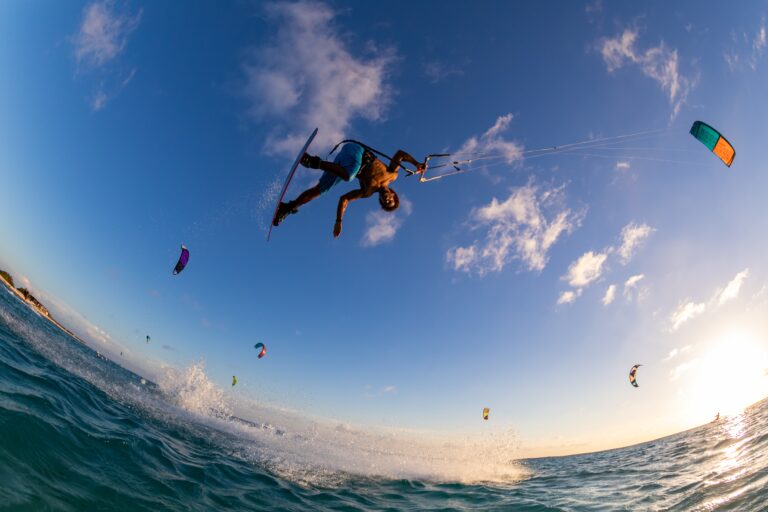
In the surf sport of kitesurfing, also known as kiteboarding, the surfer stands on a board that resembles the shape of a snowboard. This involves holding a bar that is connected to the kite. The kite harnesses the power of the wind to let one glide over the water. At the beginning, you tend to surf straight ahead, but after a bit of practice you can perform impressive tricks such as “Rolls” or “Spins”, where the kiters swing through the air like flying acrobats. With a symmetrical twintip board (or bi-directional), you can surf in both directions without having to change feet. It is the most widely used and ideal for beginners. You can choose between a fixed binding to the board or foot straps. You can imagine the latter essentially like flip-flops that you can easily slip on and off. With the fixed binding, your feet are strapped to the board with “boots”. This has the advantage that you can’t lose the board when performing extravagant tricks. The option also exists to have no binding at all – here, waves are surfed much like in surfing, with the additional power of the wind, and typically, kiteboards used for wave riding do not have foot straps.
Crazy Stuff:
• At the “King of the Air” event organized by Red Bull in Cape Town, South Africa, the top kitesurfers from all over the world compete against each other. A day full of breathtaking tricks and countless thrills included!
• If there’s no water nearby, you can also test your skills on a long skateboard or even a snowboard. The main thing is thrill and feeling of freedom!
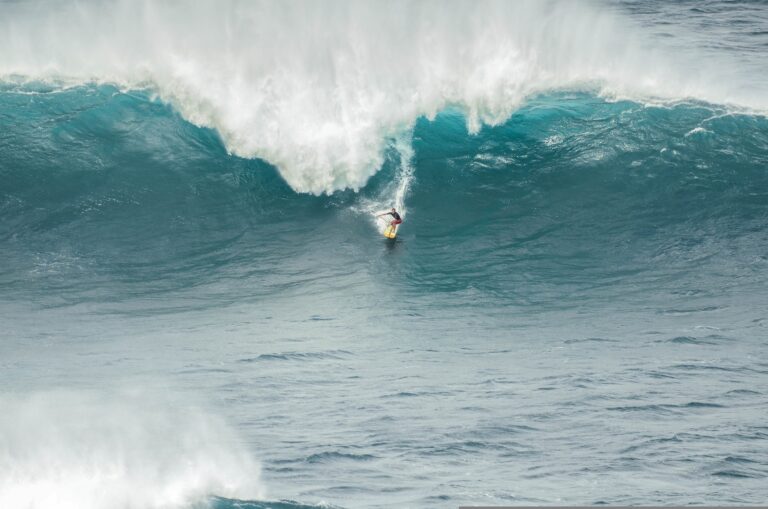
In Stand-Up paddling, commonly known as “SUP,” one kneels or stands on a sturdy board and propels oneself forward using a paddle. There are different types of boards for different occasions. Due to its length and width, an all-round board is ideal for beginners or families with children and is a popular summer activity that is mostly practiced on inland waters. A touring board is slightly longer for increased glide, yet it’s suitable for athletic beginners and intermediates. With this option, you can go on longer SUP adventures and discover nature. In contrast to touring boards, race boards are somewhat narrower, which means that a lot of distance can be covered at higher speeds with well-trained balance. If you’re looking for even more action, you can also master waves in the sea with a SUP (see the picture above). With its shorter, wider and thinner shape, a surf SUP is designed for maximum maneuverability and also has fins for more stability on the wave. Last but not least, there are yoga boards, which focus on yoga practice or a fitness workout on the water. This requires your balance and concentration, while you can be one with nature.
Crazy Stuff:
• For a very special adventure, you can explore the underwater world of the sea or lake with a transparent glass SUP.
• Stand-Up paddling can be ideally combined with other sports such as SUP polo or SUP frisbee.
• Extreme sportsman Chris Bertish crossed the Atlantic Ocean in 93 days all by himself on his SUP. He found shelter from storms and other dangers in a small bunk on the SUP. Crazy!
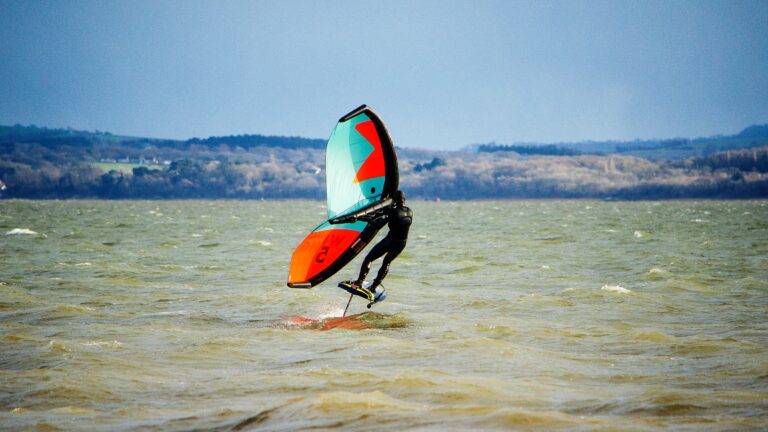
This relatively new water sport is a mixture of windsurfing, kitesurfing and foiling. The surfer stands on a board and holds an inflatable “wing” into the wind, so that he can pick up speed and surf in a specific direction. The advantage is that the wing is easy to transport and can be surfed in very light winds. When wingfoiling, you glide over the water with the foil attached under the board. The feeling of virtually floating above the water is generating increasing enthusiasm in the surfing community. The foil can be compared to the physics of a fin or an airplane wing, where speed generates lift until your surfboard no longer touches the water. The major advantage of wingsurfing with a foil is that even with relatively little wind, the foil provides lift, allowing for quick acceleration. However, it’s also possible without it: Especially beginners want to first get to know the dynamics of the wing without a foil in a trial course and opt for inflatable wing boards without a foil. Advanced surfers with a yearning for the next kick not only surf straight ahead, but also on waves.
Crazy Stuff:
• It can go even further: With the right wind strength, wing surfers can try jumps in the air using a small wave as a “ramp.” The wing assists in being lifted into the air, and the board is additionally tilted towards the windward side to increase lift.
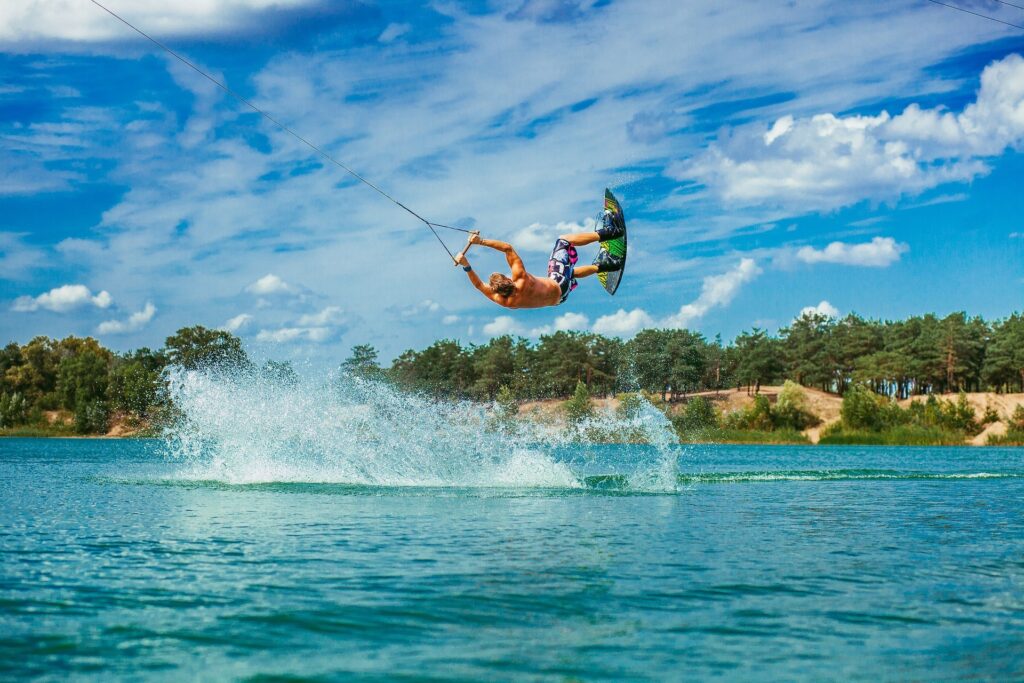
Wakeboarding combines elements of water skiing and kitesurfing. The athlete stands on a wakeboard with bent legs and holds a bar attached to a long rope. The rope is pulled by a lift or a water ski cable system (known as “cables”). More and more wakeboard routes are being built on lakes where you can try out your tricks as a beginner or practice them as an advanced rider. In addition, the rope can also be pulled by a small motorboat or a jet ski on the sea. There are no prefabricated routes here and the swell makes for a lot of fun on the water. Body tension and balance are crucial as a wakeboarder. Similar to kitesurfing, there is also the option of a fixed binding to the board or alternatively a foot strap. With the fixed binding, you can choose between “Open Toe” for more flexibility and “Closed Toe” for advanced maneuvers.
Crazy Stuff:
• Wakeskating is for true adrenaline junkies! Wakeboarders are pulled along a course with numerous obstacles using a cable winch – and all without being firmly attached to the board! The tricks are heavily inspired by skateboarding and require a lot of practice.
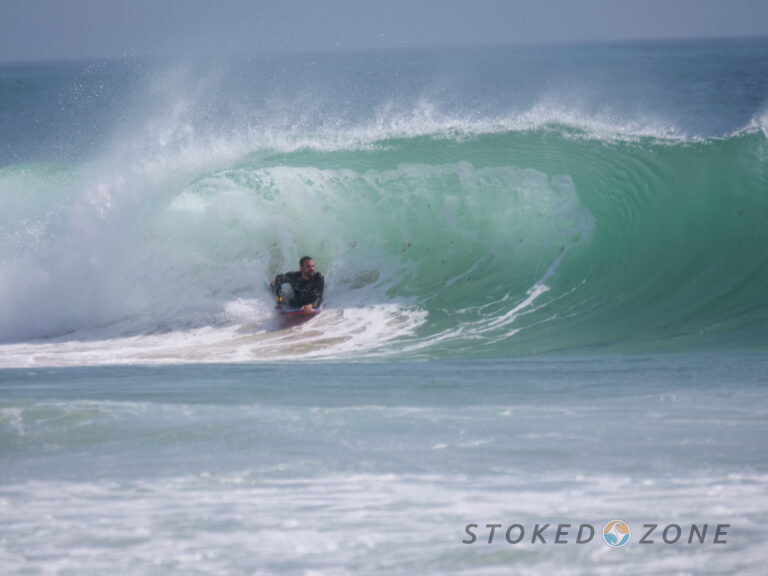
In this surf sport, the athlete lies on a shorter, rounder board to which they are connected by a wrist or upper arm leash. In addition, fins are worn to enable them to move and position themselves more quickly. Bodyboarding allows you to catch numerous waves and perform lots of fun tricks. Of course, there are also professionals in bodyboarding, but especially for beginners and children, this sport offers the perfect entry into the world of water and provides a good sense of the dynamics of the ocean. In this sport as well, there are numerous types of boards made from various materials for different conditions:
PE boards: Are mainly made of polyethylene, which is why they do not lose maneuverability even in colder waters.
PP boards: Are best surfed in warmer waters. The polypropylene core material makes for very stable boards that prevent water ingress.
EPS boards: The core is made of polystyrene, which makes them one of the cheapest, but also less robust bodyboards. They are very suitable for children or beginners.
Crazy Stuff:
• Professional bodyboarders in search of more action venture into extremely hollow breaking waves that completely enclose them (so-called “tubes”).

Skimboards” provide endless bathing fun in shallow water. They are usually made of wood and have a flat shape without fins. At the seashore in the “Break Zone,” you hold the skimboard flat in front of you, then with a bit of momentum, jump on it to glide over the water for as long as possible while maintaining balance. After few sessions, you can try out some skateboard-like tricks. During a beach vacation, skimboarding is particularly popular with children.
Crazy Stuff:
• However, it can also get more extreme: Skimboarding professionals time the next wave to skim from the shore, ride it, and even perform tricks in the process. This version is called wave skimboarding.
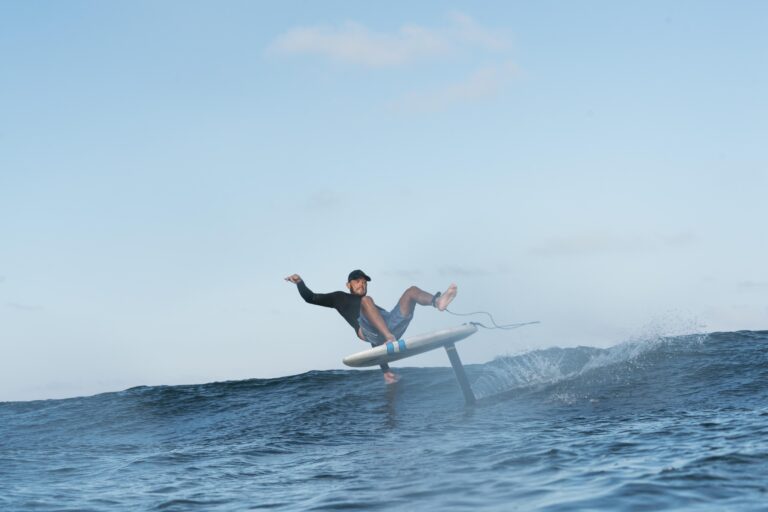
No waves – no problem! With hydrofoil surfing, you move forward using pure physical strength. Instead of a classic fin, there is a hydrodynamic hydrofoil under your board, which, as with wingsurfing, provides more lift the faster you go. By alternately shifting your weight forwards and backwards, you can achieve “foil pumping”, allowing you to glide over the water without wind and waves. The direction can be determined by tilting the body position slightly to the left or right. After a little practice, you can even ride waves – but the “take-off” is very different from classic surfing. You virtually start at the foot of the wave and lean forward – even if it initially feels like you’re about to take a nose dive! For those who want an even more intense sensation of flying over the water, they can grab an electric hydrofoil (E-hydrofoil). In addition to the foil, a small motor with battery is attached under the board, which provides an incomparable surfing experience. Depending on the board, you can fly over the water at 25-45 km/h – without wind, waves or muscle power!
Crazy Stuff:
• While surfing, one receives a brief reward after the strenuous paddling once they catch the wave – and then it’s back to paddling again! In an “Endless Wave,” you surf the wave, swiftly pump back to the peak with the foilboard, and ride the next wave again.
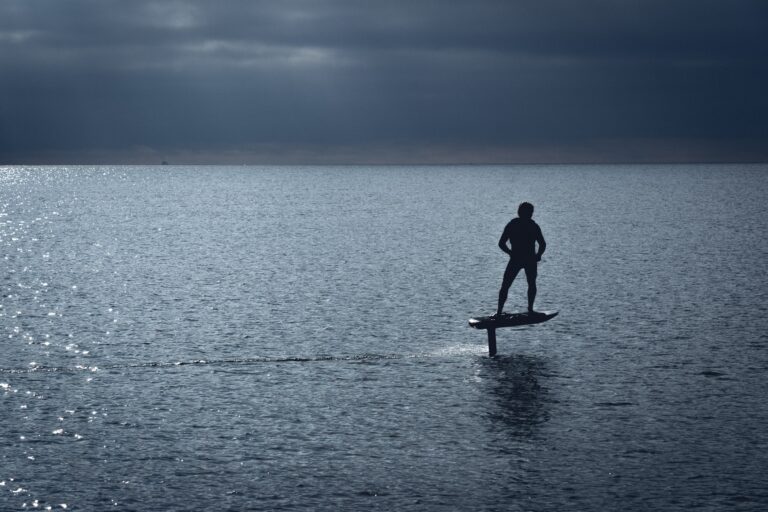
The frustration among surfers of only being able to surf when conditions are right and waves are available, has led to the development of surfboards with propulsion. Water fun is guaranteed with jet surfing! One the one hand, there is a gasoline engine here, which ensures decent speed through an impeller pump or propeller at the rear. Alternatively, there are also electric surfboards, which work in a similar way but are powered by batteries. The one-handed control is done manually from the board. You can even reach speeds of up to 60 km/h when jet surfing! The advantage of e-surfboards is that no emissions are released into the water when surfing – but charging batteries also consumes energy. Before buying, find out about the relevant laws, where you are allowed to try out jet surfing and whether a license is required.
Crazy Stuff:
• Of course, it doesn’t just have to be straight ahead here either: As soon as you feel confident on the surfboard, you can try out your favorite jumps and tricks in smaller waves.
• The novel sport of surfing has great potential for competitions, which are steadily gaining popularity among surfers.
A surf ski looks very similar to a kayak: The surfer sits in an open cockpit, which makes re-entry easier in case of a wipe-out. A double paddle is used to pick up speed using your own muscle power. The skis are on average longer and narrower than regular kayaks and are known for their easy maneuverability. The stable riding experience is a particular advantage when surfing. The paddle is used for steering.
Crazy Stuff:
• Experienced skisurfers glide not only through small but also in huge waves! This is not only impressive to look at, but also an indescribable feeling on the wave.
• In Australia, lifeguards on the beach are sometimes equipped with surf skis to rescue people who are in trouble. There are regular cool competitions among the lifeguards, where, for example, a surf ski race is held.

The Stoked Zone wishes you lots of fun exploring a (new) surf sport and hopefully the start of a passion. Water means life and you will certainly become more alive with the start of your surfing career. Take a look at our blog“Sustainable surfing” for inspiration on how you can protect the environment while practicing a surf sport.
Hang Loose
Your Stoked Zone Team

Hamburg, 11.01.2025 – After successful participation in several trade fairs and surf festivals in 2024, it is time to present the Stoked
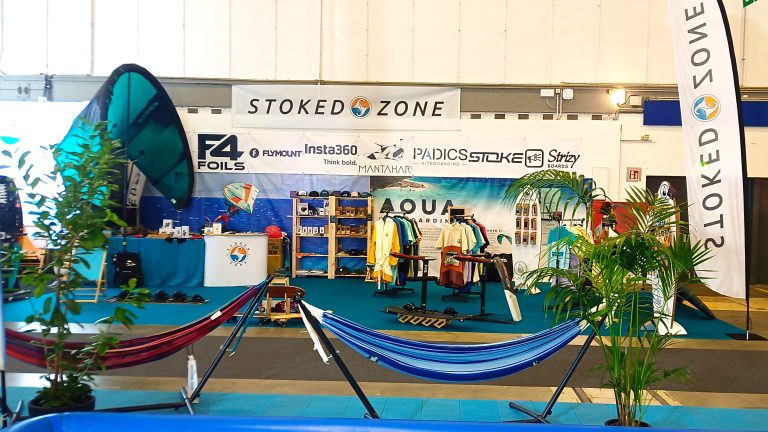
Hamburg, 10.12.2024 – Boot & Fun Berlin was another success for the development of the Stoked Zone as a platform for surf sports
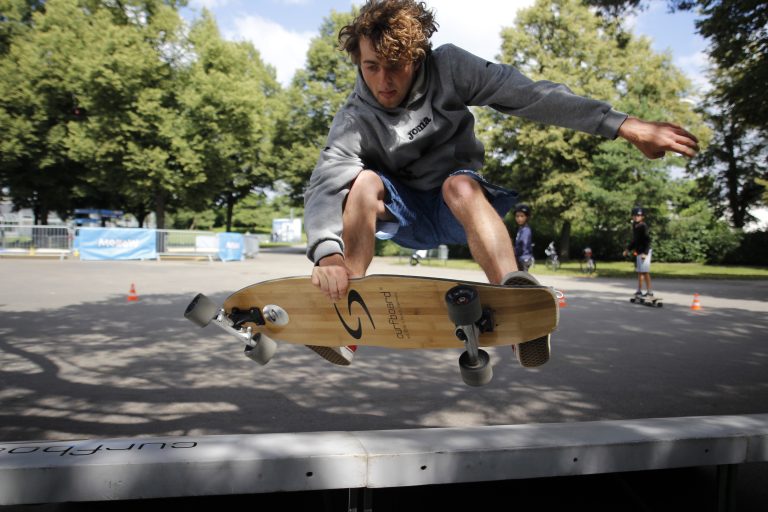
Hamburg 25.11.2024 We are very pleased to announce our partnership with the premium surfskate brand Curfboard.Curfboard is a German company with a